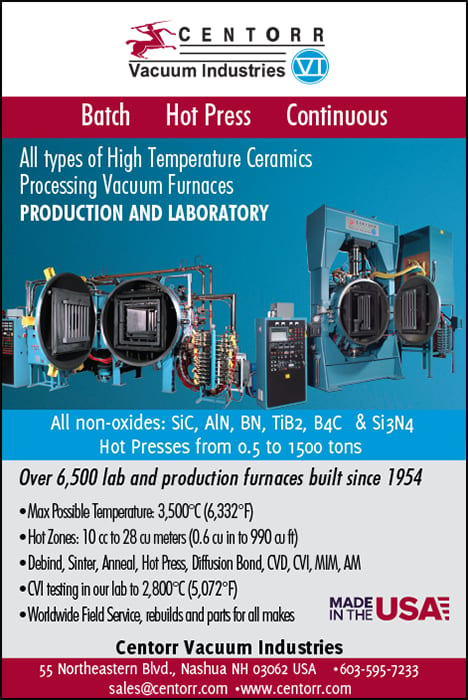news & trends
IN THE NEWS:
Low-carbon cement technology heading from lab to market
It has been just over one year since the U.S. National Science Foundation announced the establishment of the Directorate for Technology, Innovation, and Partnerships (TIP).
The TIP directorate embodies the push in recent years for the federal government to take a larger role in supporting use-inspired research and its transition from the lab to the marketplace. It has already started to spin up smaller-scale initiatives alongside its flagship initiative, the Regional Innovation Engines program, and this work is expected to continue based on the recently passed fiscal year 2023 budget.
Green technologies are a main area into which this use-inspired research funding is being channeled. If the U.S. is to uphold its commitment to the Paris Climate Agreement, industrial operations need to be decarbonized, whether through capturing emissions, implementing new processing methods, or using alternative fuels.
Cement manufacturing accounts for a significant portion of industrial emissions. To create ordinary Portland cement, calcium carbonate (CaCO3, generally limestone) is ground and then cooked with sand and clay at high heat, produced by burning coal. The cooking process breaks CaCO3 down into calcium oxide (CaO) and CO2. The CaO is then reacted with silica (SiO2) to produce alite, the major mineral phase in Portland cement.
While the coal for heating could be replaced with other fuels, the CO2 emitted from breaking down CaCO3 cannot be overcome due to the fundamental nature of the material. However, there are different ways for processing CaCO3 that result in purer CO2, which makes it easier to reuse in other applications.
Researchers at Massachusetts Institute of Technology (MIT), led by ACerS Fellow and Kyocera Professor of Materials Science and Engineering Yet-Ming Chiang and postdoctoral fellow Leah Ellis, are working on one such process.
The process, which was reported on Ceramic Tech Today in 2019, is called ambient temperature electrochemical calcination. It uses electrolysis to reduce the CaCO3.
Not only is the need for fossil fuels removed, as calcium is extracted using low-cost electricity rather than heat, CO2 is released in a pure stream of O2/CO2 gas. The CO2 can be easily extracted from this stream, in contrast to the impure flue gas from traditional cement kilns that must undergo an expensive amine scrubbing process for usable CO2 to be secured.
Additionally, the researchers say that the process is naturally purifying, so impure inputs can be used, including low-grade limestones or noncarbonate calcium minerals that do not have embedded CO2.
“We can separate the calcium from common impurities such as silica, magnesium, iron, and aluminum since these components either don’t dissolve in acid or don’t precipitate at the same pH as calcium. … [So] Sublime’s process of making lime results in a pure lime almost no matter what the starting material, and other higher-value minerals, such as magnesium, can be isolated too,” they say in a Medium blog post.
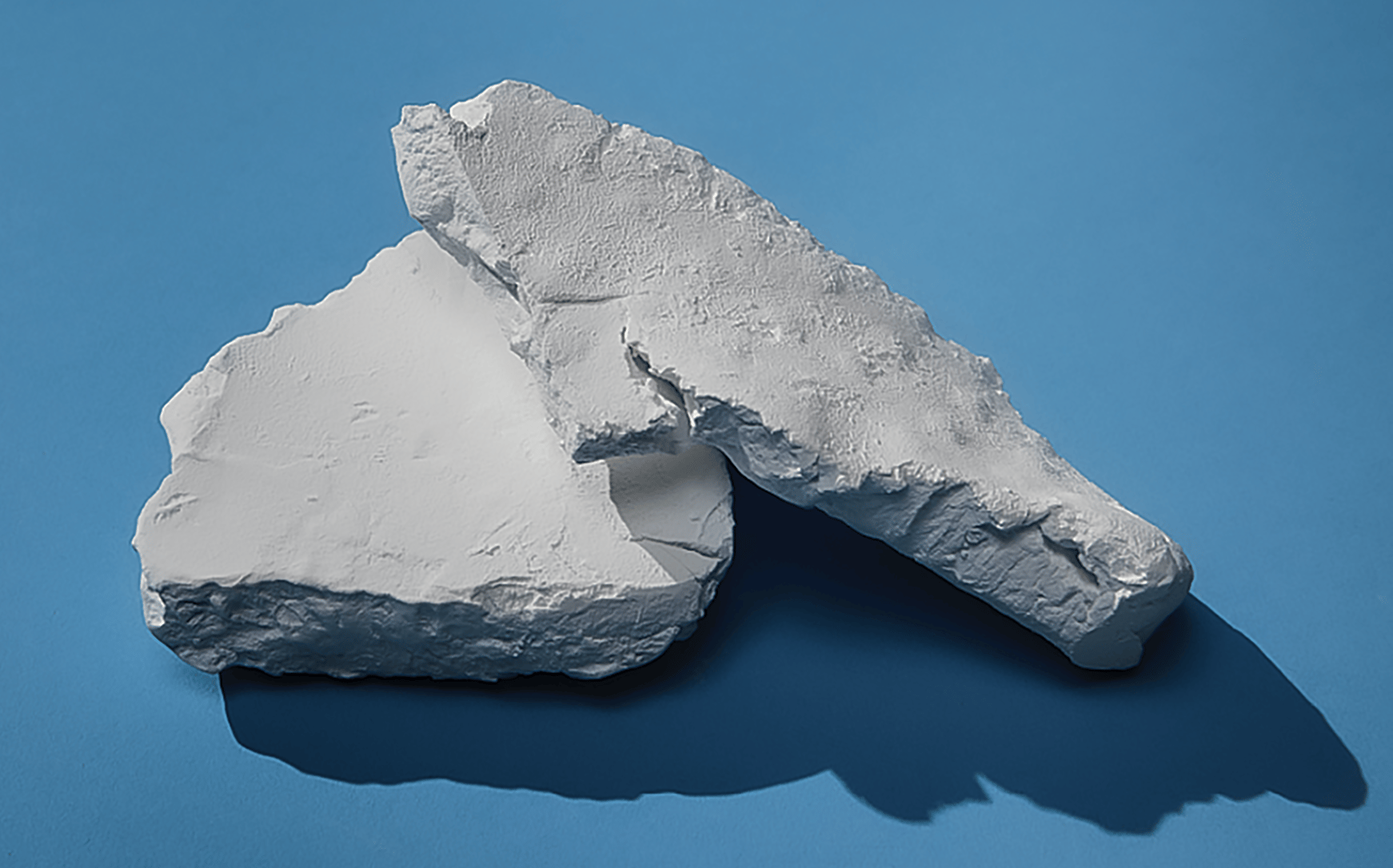
Carbon-neutral lime created using a new process developed by Massachusetts Institute of Technology researchers. The MIT researchers launched a company called Sublime Systems to commercialize the process.
Credit: Sublime Systems
In 2020, the MIT researchers established a start-up company called Sublime Systems to commercialize the process. Since then, they made several improvements to the process, including
- More energy efficient,
- Eliminated net production of H2,
- Allowed separation of CO2 and O2 gas streams,
- Enabled continuous extraction of calcium oxide from the reactor, and
- Used commercial off-the-shelf electrolyzer hardware.
In January 2023, Sublime Systems announced that it had closed a $40 million Series A funding round. The funding round was led by climate-tech focused fund Lowercarbon Capital with participation from existing investors, including The Engine, Energy Impact Partners, and others. Siam Cement Group, the largest cement producer in Southeast Asia, also plans to join as a strategic investor.
The new capital will be used to ramp up production at a pilot plant, build the company’s team, conduct product testing, and advance offtake commitments from new customers and partners. Beyond that, Sublime Systems plans to construct and operate a commercial demonstration plant by 2025 and then construct a full-scale, million-tonne-per-year cement plant by 2026/2027, with operations by 2028.
If the process is successfully commercialized, Sublime Systems may be able to take advantage of the Biden–Harris Administration’s Buy Clean initiative, which prioritizes the federal government’s purchase of steel, concrete, asphalt, and glass with lower emissions. On the state level, New Jersey recently signed a bill that incentivizes the implementation of concrete in construction projects with lower carbon emissions than traditional concrete.
With the ramp-up of use-inspired research funding and programs at the TIP directorate, ideally more university researchers will be able to transition their research to market, just as Chiang and Ellis are doing with Sublime Systems.
Chicago startup offers ‘close-looped’ water vending service based on reusable glass bottles
Glass in theory is a perfect container material because it is infinitely recyclable. But for this benefit to be realized, systems must be in place to reuse or recycle the glass. And compared to most European countries, glass recycling rates in the United States are dismal.
There are numerous reasons for these low rates, but part of the reason is that consumers are unsure which materials their city-sponsored recycling collectors accept. Even when glass is ostensibly accepted, high levels of contamination among the collected glass make it more economical for companies to throw it in the dump instead.
Instead of home collection, some local governments rely on glass-only drop-off sites to ensure cleaner glass is collected. But such programs result in much less glass being collected because fewer people are able or willing to drive out of their way to a drop-off center.
In the absence of effective city or county glass recycling programs, numerous private groups are stepping up to expand access and improve the process. Kadeya is one startup offering a unique approach to glass recycling.
Kadeya is a water vending service founded in 2020 in Chicago, Ill. Instead of single-use plastic bottles, water is dispensed in reusable glass bottles that consumers can return at the same machine.
On the Kadeya website, Kadeya founder and CEO Manuela Zoninsein says she became aware of the problem of single-use packaging after working for several years in China. However, the idea for a “closed-loop” vending program came after moving back to the U.S. and seeing Citi Bike stands in New York City.
“Can’t we build a bike-sharing network, but for water bottles? Why do we manufacture a new container for every bottle of water someone drinks?” she asks.
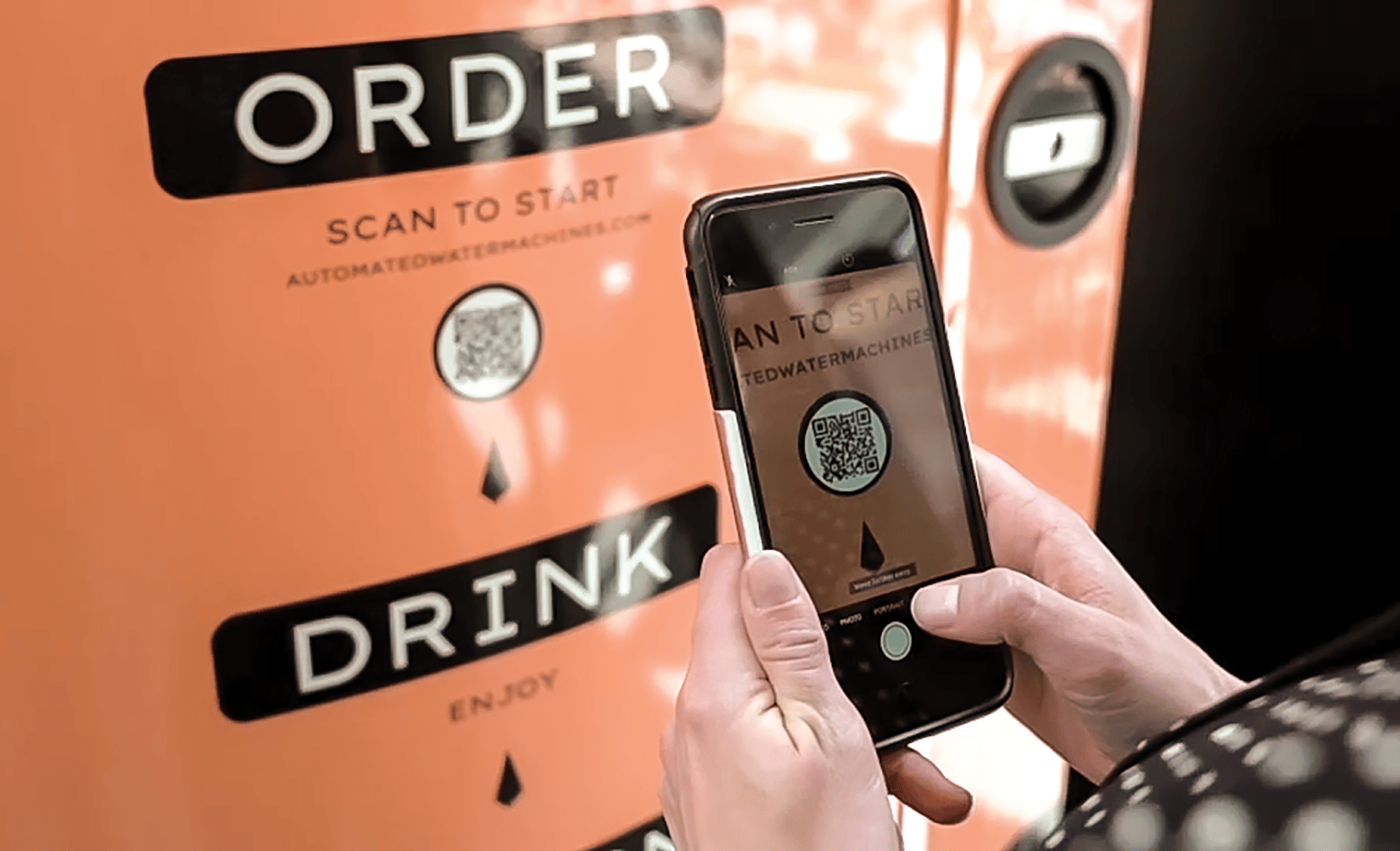
Consumers can receive and deposit glass water bottles from any Kadeya vending machine by scanning a QR code.
Credit: Kadeya
The Kadeya system, which comes from the word cadeia (“supply chain”) in Portuguese, aims to make water vending sustainable on all levels. The water is locally sourced and purified using an advanced filtration process. The purified water is then dispensed in glass bottles when someone scans a QR code on the vending machine.
When a consumer is finished with the bottle, they can scan the QR code again and deposit the bottle. Inside the vending machine, a custom dishwasher cleans and sanitizes the bottle, after which it is refilled and sealed with a new sterile tamper-evident cap.
“It’s really just like Citi Bike—we understand when a bottle is undocked from the system, and who got it, but we don’t follow them around,” Zoninsein says in a Fast Company article. “We don’t know where they [take] that bottle while they have it. But then we know who it was that returned it, and at what time and what location.”
The Kadeya vending machine is now in place at its first pilot location, a sprawling construction site in Indianapolis, Ind.
Industrial sites and factories offer an ideal test environment for Kadeya. OSHA regulations require that water be provided to workers on these sites, but due to the nature of the work, it is often dangerous or impractical for employees to bring water into work areas. The Kadeya system allows construction companies to offer easy access to water without the complicated logistics of having enough bottled water on hand each day for dozens of tradespeople.
The Fast Company article reports that Kadeya is beginning to work with a billion-dollar beverage brand to test placing sparkling water and other flavored beverages in Kadeya’s machines.
“We think our platform can enable the entire industry to transition away from single use without sacrificing any of the quality or convenience or profitability that single use provides them today,” Zoninsein says.
Multiyear study provides vast data on materials wear in marine energy technologies
Though less reported on than wind and solar technologies, marine energy technologies are also making waves in the renewable energy market. Intellectual property firm Marks & Clerk reports that the global ocean energy technology market is worth an estimated 53 billion euros (US$56.6 billion) annually, and it is expected to grow as in-development technologies reach commercialization.
As marine energy technologies mature, there is the risk that companies will learn the hard way that their devices will not last long in salt water. To help technology developers avoid wasted time and money, a new multiyear study provides much-needed data on the benefits and pitfalls of about 300 different specimens built from materials commonly used in marine energy devices.
The study is a product of the Marine Energy Advanced Materials project, which aims to address barriers and uncertainties facing marine energy developers in adopting advanced materials for structural applications.
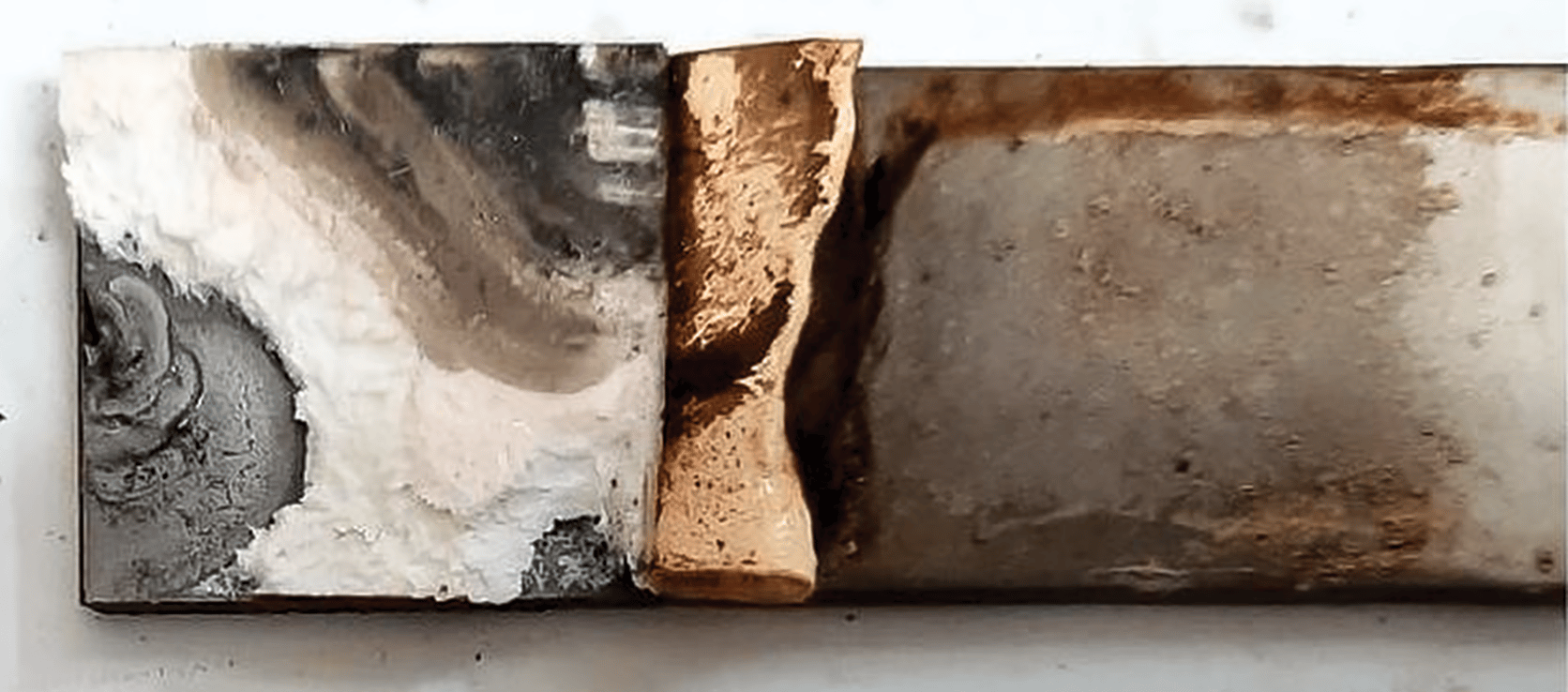
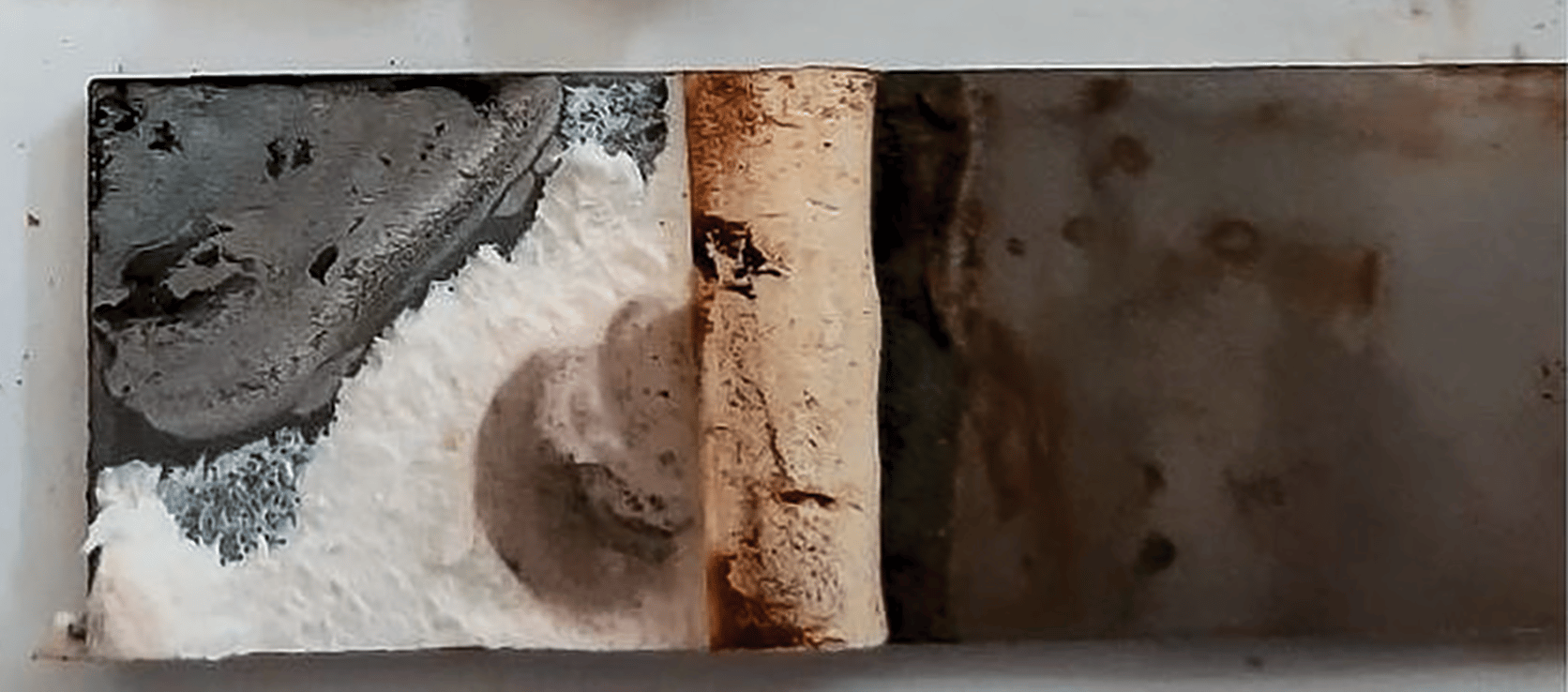
Corrosion observed deep in the bondlines of 316 steel metal–metal lap shear specimens conditioned at Pacific Northwest National Laboratory.
Credit: National Renewable Energy Laboratory
A multi-institutional team led by Sandia National Laboratories conducted the multiyear study, which took place from 2019 to 2022. Collaborators on the project include Florida Atlantic University, Montana State University, the National Renewable Energy Laboratory, and Pacific Northwest National Laboratory.
To collect the data, the researchers soaked the specimens for up to 18 months in different types of ocean water baths. The parts were then shipped to the National Renewable Energy Laboratory’s Structural Technology Laboratory for stress tests.
The data revealed that each material had its own merits, performing well in some circumstances and poorly in others. For example, composites with embedded steel generally held up well, but one specific fiberglass composite with a certain steel exhibited significant corrosion.
The biggest surprise for the researchers was that some specimens corroded at a shockingly fast rate in Pacific Ocean water versus Atlantic Ocean water. They hypothesize that it may be due to differences in the saltwater chemistry or oxygen concentrations (Pacific Ocean water has higher oxygen concentrations than Atlantic Ocean water).
The multi-institutional group plans to further investigate this strange reaction, in addition to experimenting with other materials, such as recyclable plastic resins, to assess which might be best suited for 3D printing. They also hope to perfect the aging process to make future materials testing a little less cumbersome and more accurate.
Ultimately, “The more understanding you have, the more cost you can save in the long run,” says Paul Murdy, mechanical engineer at the National Renewable Energy Laboratory, in a press release.
The report, “Subcomponent validation of composite joints for the Marine Energy Advanced Materials Project,” is freely available.
DOE charts paths to commercializing emerging energy technology
In March 2023, the Department of Energy launched the “Liftoff Reports” series, which maps pathways to commercialization for emerging clean energy technologies.
The reports in this series provide projections of commercialization timelines and outline the primary challenges various clean energy technologies face. DOE states it intends for the reports to provide “a common fact base and a tool for ongoing dialogue with the private sector,” and it plans to update the reports as the commercialization landscape evolves.
The first three reports released in March focus on advanced nuclear, clean hydrogen, and long-duration energy storage technologies. DOE expects to release additional reports over the coming months.
View the reports here.

